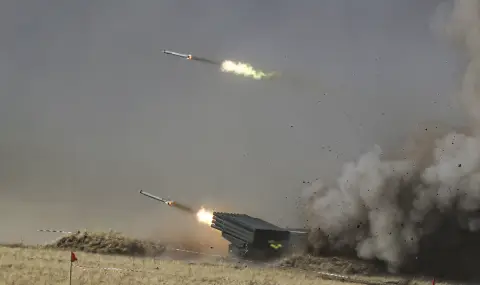While all attention is currently focused on the war in Ukraine, some European countries are increasingly concerned about the actions of the Russian army on other parts of its border with Europe. Near the border with Finland, in the Russian city of Petrozavodsk, Russian military engineers are expanding army bases where the Kremlin plans to create a new army headquarters to command tens of thousands of troops over the next few years, The Wall Street Journal reports.
"These soldiers, many of whom are currently serving on the front lines in Ukraine, are on track to become the backbone of the Russian army preparing for a clash with NATO, according to Western military and intelligence officials. The Kremlin is expanding military recruitment, increasing weapons production and modernizing railways in border areas,” the publication writes.
US President Donald Trump has previously said that fears that Russia has ambitions beyond Ukraine are exaggerated. However, military experts characterize the activity on the border with Finland as part of the Kremlin’s preparation for a potential conflict with NATO.
Production and armaments
According to European military officials, Russia’s increased spending has brought arms factories to full capacity, which has prompted military-industrial companies to expand production lines and open new plants.
In 2021, before the invasion, Russia produced about 40 of its T-90M main battle tanks, according to Western intelligence estimates. It now produces almost 300 tanks a year. At the same time, a senior Finnish military official said that almost none of them are going to the front lines in Ukraine, but remain on Russian territory for further use.
Production of artillery and ammunition in Russia is expected to increase by about 20% this year, and the quality and production of drones has increased significantly.
Predictions of invasion
In a February report, the Danish intelligence agency warned that Russia could start a large-scale war in Europe within five years if it considers NATO weak.
A European intelligence official said that Russia could try to test the cohesion of the alliance by invading a small NATO country such as Estonia, which has a significant Russian population.
According to Michael Koffman, a senior fellow in the "Russia and Eurasia" program to the Carnegie Endowment for International Peace, Baltic authorities are “looking at a period of two to three years after the war. If the reference period is a large-scale war, probably with NATO, then the time frame could be about seven to ten years, depending on the scenario.”
Army Revival
Meanwhile, to focus its forces on the West, the Kremlin last year changed the way it organizes its forces in the country, creating new districts related to the defense of its largest cities, Moscow and St. Petersburg.
In the Moscow Military District, Russia is integrating the roads and railways used by its military with those in neighboring Belarus. At the same time, most of the personnel increase will take place in the Leningrad Region, which borders Estonia, Latvia and Finland. According to Western military and intelligence officials, small brigades will almost triple in size to become 10,000-strong divisions.
In addition, Russia is adapting its rearmament plans to meet the needs of new troops that will be deployed along its border with NATO. These units will receive the bulk of the new equipment. At the same time, most of what is being sent to the front lines in Ukraine is old and refurbished Soviet-era weapons.
War between Russia and NATO
Previously, the Danish Ministry of Defense outlined possible scenarios and the time it would take for the Kremlin to prepare for a new war. Thus, according to estimates, in six months the Russian Federation could be waging a local war in one of its neighboring countries; In two years, this will pose a real threat to one or more NATO countries, and in about five years, Moscow may be ready for a large-scale war on the European continent without the participation of the United States.
The alliance has already begun preparations for a possible conflict with Russia, but the head of the Polish National Security Bureau, General Dariusz Lukowski, said that in the event of a war with Russia, Poland would be able to hold out for only one or two weeks, but then it would run out of ammunition.
WSJ: Moscow Masses Troops on Its European Border, Preparing for War with NATO
Russia is also adapting its rearmament plans to meet the needs of the new troops that will be deployed along its NATO border
Apr 28, 2025 10:50 32
